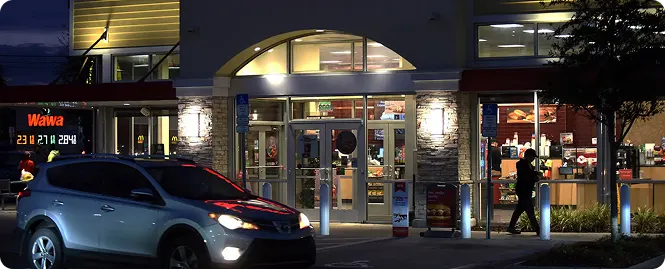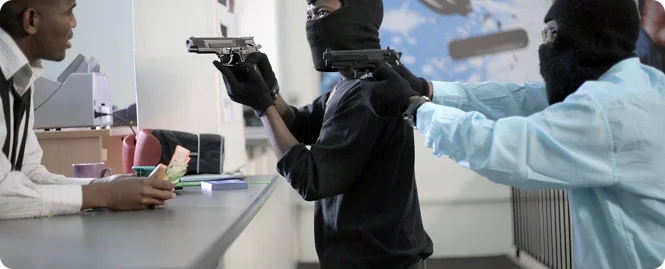Why Is Crime So Common at Convenience Stores?
Table of Contents
Key Takeaways
-
Their late hours, easy access, and cash-heavy transactions make them attractive to criminals, increasing theft and robbery at convenience stores.
-
Many stores have limited security and surveillance, making it easier for offenders to commit crimes undetected. Security measures like cameras and alarm systems help but are not always enough.
-
Employees and customers face greater risks with fewer employees on duty, especially at night. Proper training and crime prevention in convenience stores are essential.
-
Some criminals see convenience stores as easy targets, repeatedly committing crimes, sometimes linked to drug use and unregulated sales in certain areas.
-
Investing in security systems, law enforcement partnerships, and better store layouts can help convenience store owners reduce risks and protect their businesses.
Convenience stores are a lifeline for quick essentials, but they also face serious crime risks. Their late hours, cash-heavy transactions, and minimal security measures make them easy targets for theft and robbery. Criminals often exploit security challenges, such as limited staff and lack of physical barriers, putting employees and customers in danger. Without strong security measures, incidents like shoplifting, vandalism, and workplace violence continue to rise, making crime prevention in convenience stores a growing concern.
Understanding the reasons for crime in convenience stores is key to improving the safety and security of your business. Issues like low staffing, high cash on hand, and inadequate surveillance create vulnerabilities that criminals take advantage of. Convenience store owners must address these risks by installing security cameras, training employees, and strengthening store security. By implementing effective crime prevention strategies, stores can reduce security challenges and create a safer environment for both employees and customers.
Convenience Stores as Prime Targets for Crime
Convenience stores are frequent crime targets due to easy access, minimal security, and high cash flow. Their small size and open layout make theft and robbery at convenience stores easier for criminals, while limited staff and lack of physical barriers create security vulnerabilities. Additionally, repeat offenders often target these businesses, knowing that store security measures may not be strong enough to deter them. Without effective crime prevention strategies, these stores remain at high risk.
With large amounts of cash on hand, extended late-night hours, and isolated locations, convenience stores become even more vulnerable to crime. Criminals see these factors as opportunities, especially when security cameras or store security are lacking. Owners must address these security challenges to protect employees and customers from potential threats.

Cash-Heavy Transactions
Frequent cash transactions at convenience stores significantly elevate the risk of theft. With approximately 160 million transactions daily, many involving cash, these establishments become attractive targets for criminals seeking quick access to money. The constant cash flow not only tempts external thieves but also poses challenges in monitoring internal theft. For instance, a convenience store in North Haven, Connecticut, was robbed when a suspect demanded cash from the register, highlighting the vulnerabilities of cash handling.
Operations are more vulnerable during late-night hours when cash volumes are higher, and staffing is minimal. In Georgia, a convenience store experienced an armed robbery around 1:08 a.m., exemplifying the increased risks during these periods. The combination of cash-on-hand and reduced personnel makes late-night operations susceptible to crimes.

Limited Security and Surveillance
Many convenience stores lack having comprehensive security systems, making them vulnerable to risks such as theft and violent crimes. In 2021, U.S. convenience stores experienced over 22,000 violent incidents, which accounted for 3% of the nation's rate of total violent crimes. For example, a newly opened family-run convenience store in Mackay suffered a break-in just six weeks after opening, further highlighting the consequences of not having adequate security measures incorporated into your business.
Implementing robust security measures, such as video surveillance, alarm systems, and trained security personnel, is essential for deterring criminal activities. Visible security cameras can discourage potential offenders, while real-time monitoring allows for immediate response to incidents. Additionally, having collaborative unison between store owners and law enforcement can enhance overall safety.

High-Traffic, Low-Staffed Environment
During peak hours, convenience stores often become crowded yet remain understaffed, creating an environment conducive to theft and robbery. The high influx of customers overwhelms the limited staff, making it challenging to monitor all areas effectively. This scenario provides cover for shoplifters and potential robbers to exploit the situation. For instance, in Albany, a store experienced a surge in thefts and assaults, leading to closure due to an unsafe environment for both customers and employees.
Limited staff presence during these crowded times increases opportunities for shoplifting and robbery, as employees cannot sufficiently oversee all store sections. This lack of surveillance encourages criminals to act, knowing the chances of being caught are minimal. Implementing security measures and ensuring adequate staffing are essential to mitigating these risks.

Lack of Physical Barriers
Many convenience stores have open layouts with minimal barriers, making them easy targets for criminals. Wide aisles, multiple entrances, and cash registers near exits allow quick getaways after theft or robbery. The lack of physical security makes it easier for criminals to operate unnoticed. For example, in Philadelphia, Wawa stores faced repeated thefts due to their open design, forcing management to close certain locations. Improving store layouts with security barriers can help reduce these risks.
A more secure store layout can help prevent crime by incorporating lockable areas, reinforced counters, and clear sightlines for employees and security cameras. By restricting access to high-value products and installing protective barriers at cash registers, store owners can minimize exposure to crime-related risks, protecting both employees and customers.

Targeted by Repeat Offenders
Certain criminals target convenience stores repeatedly, learning their daily routines and vulnerabilities. Regular customers or former employees may exploit predictable schedules, such as cash drops and shift changes, to commit theft or robbery. For instance, groups of thieves in Los Angeles have repeatedly targeted 7-Eleven stores, stealing cash and store equipment while successfully being caught. Incidents like these highlight the need for adopting improved security protocols, such as varying staff routines and increasing team vigilance.
Neighborhoods with high crime rates often see the same convenience stores targeted multiple times. These businesses remain vulnerable without strong deterrents like security cameras, alarm systems, and collaboration with law enforcement. Store owners in such areas must invest in comprehensive crime prevention strategies to break the cycle of repeat offenses.

Drug Use and Unregulated Sales
Convenience stores are often situated in areas with elevated drug use and distribution, making them susceptible to associated criminal activities. The accessibility and anonymity of these stores attract individuals seeking to purchase or sell illicit substances. For instance, in Texas, certain convenience stores have been found selling untested and potentially lethal substances disguised as dietary supplements, contributing to the local drug problem. This environment not only endangers the community but increases the likelihood of crimes.
The sale of illegal items in convenience stores significantly heightens the risk of criminal activity. In Canada, a convenience store was accused of trafficking weapons and selling illegal tobacco products, leading to increased crime in the area. Such illicit operations attract criminals, jeopardizing the safety of employees and the customer’s trust.

Convenience Store Employees as Targets
Convenience store employees face significant risks during robberies, including physical harm, psychological trauma, and even loss of life. Criminals targeting these stores often act aggressively, especially when demanding cash or valuable items. In 2024, a Philadelphia convenience store worker was fatally shot during a robbery, highlighting the dangers employees encounter. The presence of weapons and unpredictable behavior from offenders makes these situations even more perilous, emphasizing the urgent need for improved security measures and systems.
Proper employee training systems can significantly reduce robbery-related risks. Teaching staff how to respond calmly, comply with demands, and use panic buttons helps. Additionally, businesses providing post-incident support, such as counseling and paid recovery time, ensure employees' well-being. Regular safety drills and collaboration with law enforcement also strengthen workplace security.

Social and Environmental Factors
Convenience stores located in neighborhoods with high unemployment and crime rates often experience elevated incidents of theft. Economic hardships can lead individuals to engage in criminal activities, with convenience stores being frequent targets due to their accessible goods and cash. For example, a study highlighted that areas with greater poverty and less police presence resulted in higher rates of property theft, affecting local businesses. This environment threatens store operations and the safety of employees and customers.
Community involvement and local initiatives are crucial in reducing crime around convenience stores. Engaging community residents with watch programs and implementing youth outreach activities can deter criminal behavior. For instance, the Glendale, Arizona Smart Policing Initiative successfully reduced thefts at local convenience stores through a problem-solving model involving community collaboration.

Conclusion
Crime at convenience stores stems from various factors, including high cash flow, late operating hours, understaffing, and poor security measures. Additionally, store layouts with limited barriers, high-crime neighborhoods, and repeat offenders further increase risks. Understanding these issues is crucial for developing effective strategies to enhance safety and prevent criminal activities.
Store owners can reduce crime risks by improving security measures such as installing surveillance cameras, alarm systems, and better lighting. Training employees on robbery prevention, cash-handling safety, and emergency response also helps deter criminal activity. Collaborating with law enforcement and implementing community-driven initiatives strengthens security and fosters a safer environment.
Insurance is vital for convenience store owners to protect against financial losses from theft, property damage, and liability claims. Policies like crime insurance and general liability coverage help store owners recover from unforeseen events, ensuring business continuity. A comprehensive insurance coverage safeguards both assets and employees, offering peace of mind.

